ORONO — Standing in his laboratory at the University of Maine, Russell Edgar watches a piece of lumber slowly bend to its breaking point. A sharp “crack!” pierces the air.
Looking at his computer, Edgar notes it took exactly 4,089 pounds of force applied to this particular two-by-eight board – sawed from a Norway spruce log harvested in northern Maine – before it snapped.
Edgar, wood composites manager at UMaine’s Advanced Structures and Composites Center, and his team have put roughly 125 pieces of lumber through this type of test. They’re only getting started. Over the next four to six weeks they’ll put more than 1,000 two-by-fours, two-by-sixes and two-by-eights – all sawed from Norway spruce trees from Maine, New York, Wisconsin and Vermont – through these same strength tests.
“We are ready to kick into high gear at this point,” Edgar said.
The project’s goal? To determine if Norway spruce grown in the United States is strong enough to be used in this country for building construction.
The tests are making history, at least within the forest products industry. The last time a new species was tested for use in construction was more than two generations ago, according to Jeff Easterling, president of the Northeast Lumber Manufacturers Association, which is based in Yarmouth.
“This is the first time in probably 80 years that a new species has been tested from logs grown in the United States,” Easterling said. “There will probably never be another one, so that’s the amazing thing from our standpoint – this could be a once-in-a-lifetime event.”
It’s also a historic event for another reason. The Norway spruce being tested at UMaine come from some of the estimated 3 billion trees of various species planted around the country during the Great Depression by the Civilian Conservation Corps, an effort of President Franklin D. Roosevelt’s to put people back to work. The CCC workers planted the trees to reclaim abandoned farmland, and used primarily Norway spruce in the Northeast and Great Lakes region, according to Easterling.
In Maine, most of the trees were planted in Aroostook County, but there are significant plantations of the non-native species in nearly half a dozen Maine counties, according to his organization’s research.
While builders in Europe have used Norway spruce for ages, it is off-limits to the U.S. construction industry because the proper strength tests were never conducted on the trees grown in this country.
“It’s important that we categorize and monitor this wood resource over time,” Edgar said.
“Norway spruce here in the U.S. has never been tested for inclusion in the building codes and that’s what we’re up to.”
Preliminary tests look promising, he said. The two-by-eight board that snapped at more than 4,000 pounds of pressure easily exceeded the range of strength needed for commercial lumber used as floor joists, rafters or studs, said Easterling. Other metrics must be taken into account, though, before the board passes muster for commercial use.
Once the tests are completed, Edgar will compile the test results and submit them for peer review before they ultimately go to the American Lumber Standards Committee, a quasi-governmental organization based in Washington, D.C., that has the ultimate authority to approve Norway spruce for use in the construction industry. As of now, the group is expected to consider the Norway spruce at its meeting in April 2016.
A ‘SIGNIFICANT AMOUNT’ OF WOOD
The Norway spruce is recognizable among other evergreen species by its long branches, which curve upwards near the end, and its long, tightly packed pine cones. It’s a species often used in landscaping for ornamental purposes and wind breaks.
It’s not known how many Norway spruce seedlings were planted during the Great Depression, but the U.S. Forest Service has estimated that around 2.1 billion board feet of standing saw timber are currently scattered across 13 states, the majority in New York.
The federal agency estimated Maine contains roughly 12.1 million board feet in Aroostook and Knox counties.
But Easterling and his team say the forest service’s sampling methodology underestimated the amount of Norway spruce in Maine. Easterling said his organization found significant plantations of the species in Oxford, Somerset and Penobscot counties. Easterling thinks it’s safe to assume there are at least 24 million board feet of Norway spruce in Maine.
On an annual basis Maine sawmills produce roughly 425 million board feet of construction lumber from spruce, pine and fir logs, which means Norway spruce would increase the supply by roughly 5 percent, according to Easterling. That’s a “significant amount” of potential building material that is currently blocked from entering the supply chain, he said. Durable wood products, such as lumber, accounted for 6 percent of the state’s $5.1 billion manufacturing sector in 2013.
“When you’re talking in half-billion units, that’s sizable,” he said.
HARVEST OPPORTUNITIES
The seedlings planted during the Great Depression are now between 80 and 100 feet tall and their diameter at breast height ranges from about 16 inches to 26 inches. In other words, perfect for lumber.
If the strength tests are successful, Easterling said the introduction of Norway spruce into the construction industry could have a major economic impact for three main groups: landowners who have Norway spruce on their properties; the loggers hired to harvest the trees; and the sawmills that turn the logs into lumber. To date, Norway spruce in this country has been harvested for pulpwood, but lumber has a higher-value use.
The economic impact will be especially strong if the economy continues to improve and there is a steady increase in home construction.
“What they did 80 years ago could really boost the economy and create a whole new resource that wasn’t in existence then, but now is,” Easterling said.
Alan Orcutt, mill manager at J.D. Irving’s Dixfield Sawmill, said the ability for mills to procure more lumber translates into added hours for millworkers, increased lumber production and potentially more jobs.
One group that will likely not be affected by the addition of Norway spruce to construction grade lumber is the average consumer.
Anyone walking into a Home Depot to buy two-by-sixes to build a new deck would never be able to tell a Norway spruce from a similar species – or notice a difference in price.
“Once it’s delimbed you cannot tell those logs from those of native spruces,” Easterling said.
“Same with lumber – you’d not be able to notice the difference at Home Depot.”
The research at UMaine’s Advanced Structures and Composites Center was funded with a nearly $300,000 competitive grant the lab received in 2013 from the U.S. Department of Agriculture.
The project is a perfect example of a public-private partnership between the university and industry, said Stephen Shaler, director of UMaine’s School of Forest Resources and associate director of the composites center.
The Northeast Lumber Manufacturers Association, Easterling’s organization, isn’t providing money to UMaine, but it spent a significant amount of the man-hours and resources to find the trees, harvest them, transport them to the mills to be sawed, edged and planed and then shipped to UMaine, Shaler said.
“They haven’t paid the university for the testing, but they have spent a lot of resources to make it happen, so it’s a partnership,” he said.
“It’s leveraging federal dollars with industry participation. That’s a wonderful situation that doesn’t always happen.”
Send questions/comments to the editors.


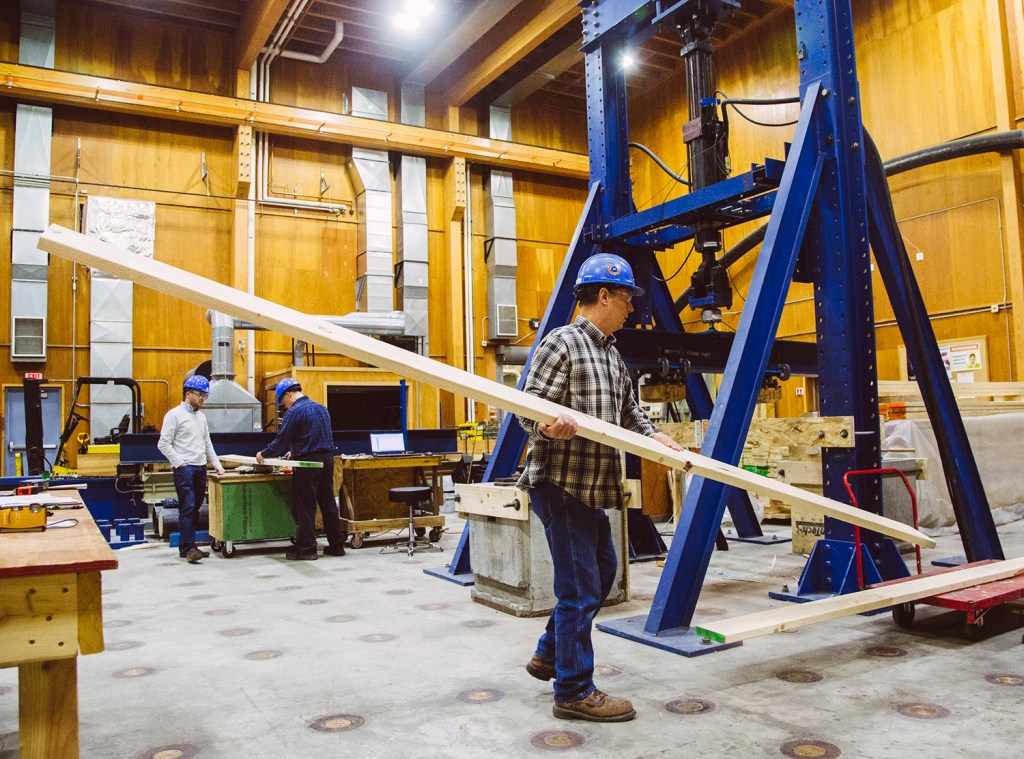
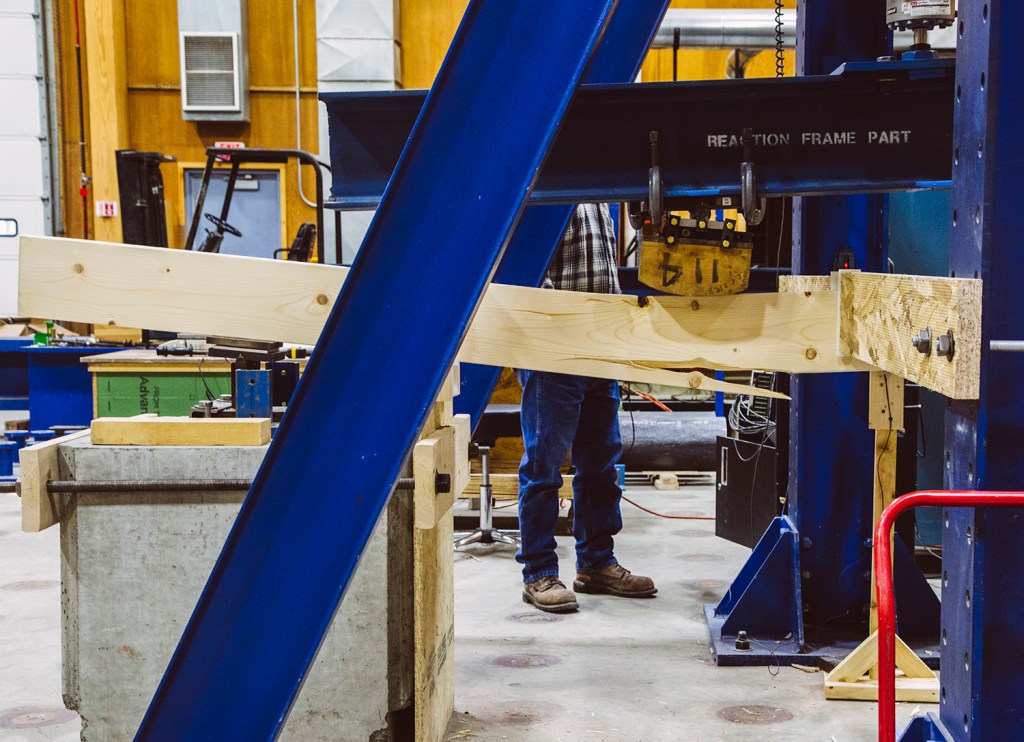
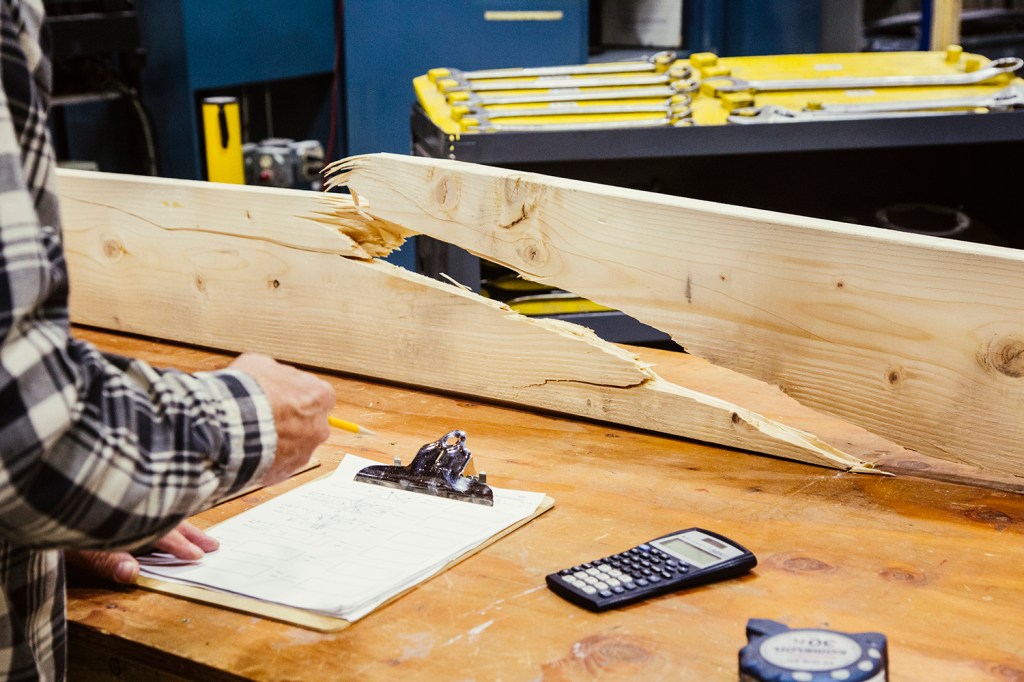
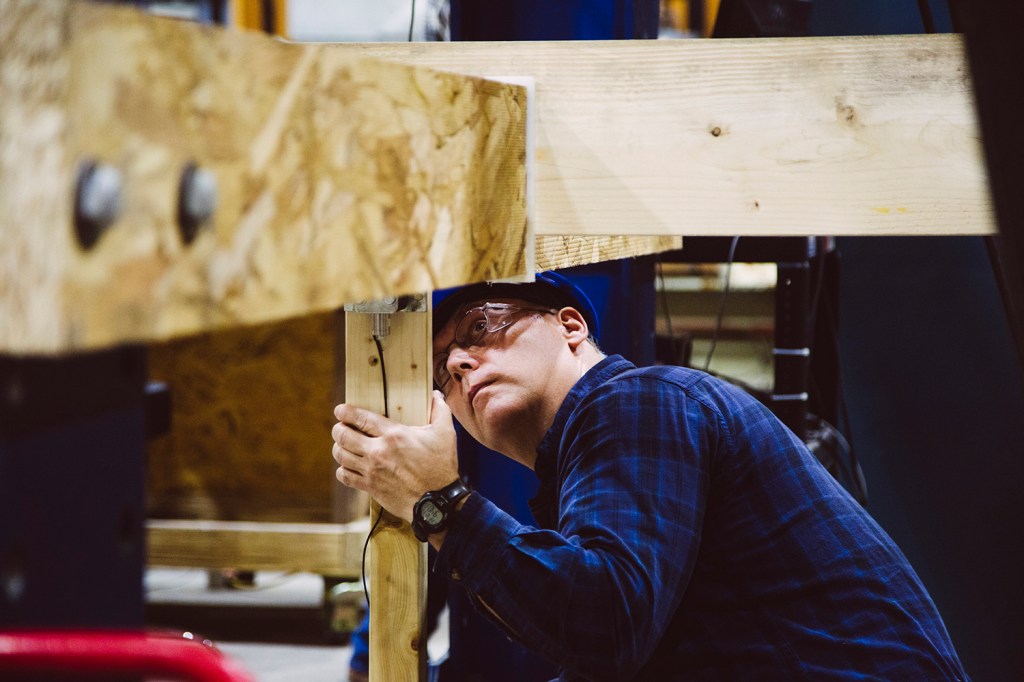

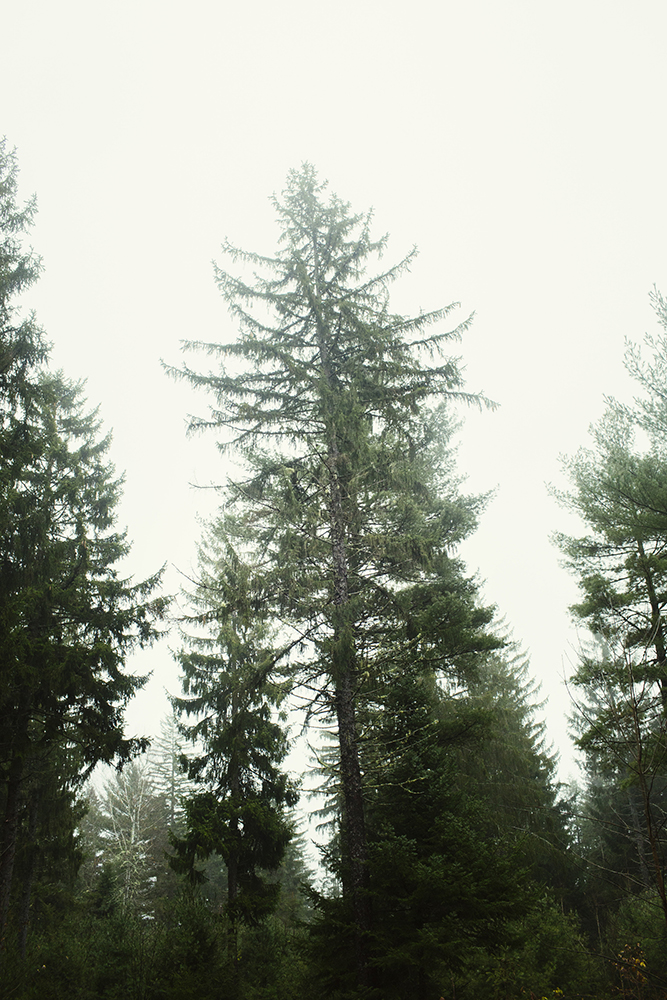
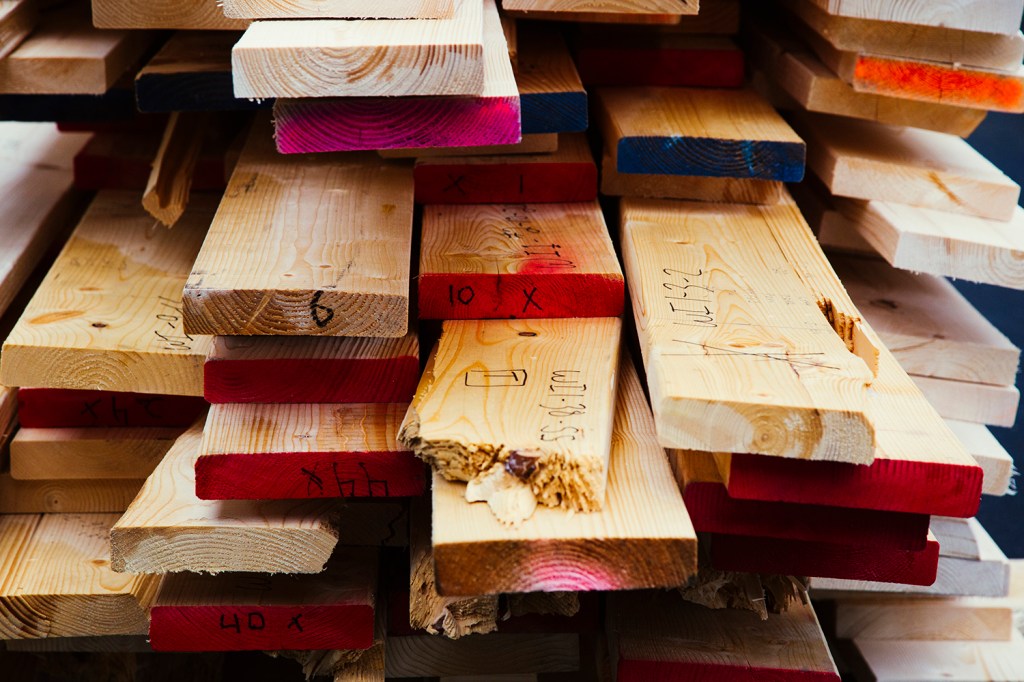

Comments are no longer available on this story